Looking at investing in fixed-income in Canada? Bond ETFs are a simple and effective method to do so.
As of January 2023, bond ETFs accounted for 24.8% of all ETF assets in Canada, according to IFIC.
Most investors will combine bond ETFs with equity ETFs to build their portfolio, which I go into more detail about below.
Here are our picks for the best bond ETFs in Canada.
What is the Value of Buying a Bond ETF Over Normal Bonds?
Bond ETFs offer several advantages for investors over purchasing individual bonds. Here are some primary benefits:
- Diversification: Bond ETFs typically hold a variety of bonds, which can spread risk across multiple issuers, sectors, and maturities. Diversification can help reduce the impact of any single bond defaulting or underperforming.
- Liquidity: ETFs trade on stock exchanges, which means they can be bought and sold throughout the trading day at market prices, similar to stocks. This is different from individual bonds, which might not be as liquid, especially in the case of less common or lower-credit-quality bonds.
- Lower Minimum Investment: Bond ETFs allow investors to achieve exposure to a diversified bond portfolio with a smaller outlay of capital.
- Flexibility: Bond ETFs offer various investment strategies, including targeting specific sectors (like corporate or government bonds), maturities (short, medium, or long-term), or credit qualities (from high-yield or “junk” to investment grade).
- Ease of Management: For those not well-versed in bond investing or without the time to manage a bond portfolio, bond ETFs offer a more hands-off approach.
- Cost-Effective: While bond ETFs charge a management fee, they can be more cost-effective than actively managed bond mutual funds. Also, the transaction costs can be lower than purchasing multiple individual bonds.
- Price Discovery: Because bond ETFs trade on exchanges, they offer real-time pricing. This can provide insight into the broader bond market’s health and sentiment.
How to Use Bonds in Your Portfolio
You might be wondering, why invest in bonds at all? If stocks perform better, then why not just invest 100% of your portfolio in stocks?
The main reason is that not many people can handle the volatility of an all-equity portfolio, meaning their risk tolerance can’t handle the huge up ups and downs, and you can end up making bad investment decisions.
Bonds play an important role in your investment portfolio by providing stability and diversification. Bond ETFs are particularly useful for diversification as they counterbalance the volatility often seen in the stock market.
Historically, bonds and stocks have a negative correlation, meaning that when bond yields rise, stock prices tend to fall, and vice versa. By including both stocks and bonds in your portfolio, you can lower the overall risk and volatility.
Test to see what your risk tolerance is here with this free Vanguard questionnaire. It will give you a rough idea of what percentage of your portfolio should be stocks vs bonds.
Different Bond Strategies You Can Use
Before rushing to invest in fixed income, you must understand that there are many different types of bonds and bond ETFs. Below is a general summary of the types of bonds and strategies you can encounter:
| Type of Bond | Interest Rate Risk | Default Risk | Typical Yield |
| Short-Term Bonds | Low | Low to Medium | Low |
| Corporate Bonds | Medium to High | Medium | Medium |
| High-Yield Bonds | Low to Medium | High | High |
| Floating-Rate Bonds | Very Low | Low | Low |
| Government Bonds | Low to High | Very Low | Low to Medium |
Best Bond ETFs in Canada
Here’s a quick summary of all the bonds in this list. We’ll go over it in more detail below.
| Bond Name | MER | YTD Return | Strategy |
|---|---|---|---|
| BMO Short Corporate Bond ETF (ZCS.TO) | 0.11% | 0.01% | Short-Term Bond ETF |
| iShares Core Canadian Short-Term Bond Index ETF (XSB.TO) | 0.10% | -0.21% | Short-Term Bond ETF |
| Vanguard Canadian Short-Term Bond Index ETF (VSB.TO) | 0.11% | -0.16% | Short-Term Bond ETF |
| BMO Mid Corporate Bond Index ETF (ZCM.TO) | 0.34% | -0.58% | Corporate Bond ETF |
| Horizons Active Corporate Bond ETF (HAB.TO) | 0.60% | -0.59% | Corporate Bond ETF |
| IShares Core Canadian Corporate Bond ETF (XCB.TO) | 0.17% | -0.72% | Corporate Bond ETF |
| Horizons Active High-Yield Bond ETF (HYI.TO) | 0.71% | 0.29% | High-Yield Bond ETF |
| NBI High Yield Bond ETF (NHYB.TO) | 0.69% | -0.53% | High-Yield Bond ETF |
| iShares U.S. High-Yield Bond Index ETF [CAD-Hedged] (XHY.TO) | 0.66% | -0.3% | High-Yield Bond ETF |
| Mackenzie Floating-Rate Income ETF (MFT.TO) | 0.68% | 1.04% | Floating-Rate Bond ETF |
| iShares Floating Rate ETF (XFR.TO) | 0.22% | 0.41% | Floating-Rate Bond ETF |
| BMO Floating-Rate High Yield ETF (ZFH.TO) | 0.45% | 0.56% | Floating-Rate Bond ETF |
| BMO Government Bond ETF (ZGB.TO) | 0.17% | -1.63% | Government Bond ETF |
| IShares Core Canadian Government Bond ETF (XGB.TO) | 0.13% | -1.63% | Government Bond ETF |
| Vanguard Canadian Government Bond ETF (VGV.TO) | 0.17% | -1.71% | Government Bond ETF |
Best Short-Term Bond ETFs in Canada
This category focuses on bond ETFs that invest in bonds with a short maturity date. These bonds tend to come with a lower annualized yield but also greatly reduce risk from an interest rate perspective. Throughout a rising rate environment, short-term bonds should outperform long-term bonds.
1. BMO Short Corporate Bond ETF
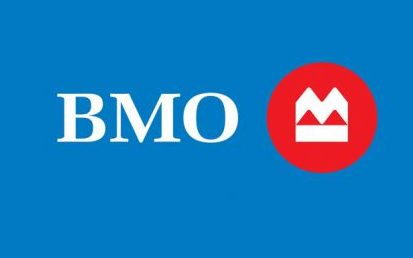
- Ticker: ZCS.TO
- Currency: CAD
- Inception Date: October 20, 2009
- Assets under Management: $1.45 Billion
- Management Expense Ratio: 0.11%
- Listed on: Toronto Stock Exchange
- Distribution Yield: 3.36%
- Weighted Average Maturity: 2.93 Years
- Approximate Holdings: 400
- Management Style: Passive
- Risk Rating: Low
- Distribution Frequency: Monthly
- Stock Price: $13.27
- YTD Return: 0.01%
BMO’s ZCS comes with excellent features for short-term bond exposure.
The ETF invests entirely within Canada across short-term bonds issued by investment-grade companies. The benchmark that it passively tracks is the FTSE Canada Short-Term Corporate Bond Index.
With over 400 individual bond holdings, the ETF is very well diversified across corporate bonds. BMO offers ZCS at an extremely low MER within the short-term bond category. The ETF’s assets exceed $1 billion, making it an extremely large ETF.
Like most fixed-income ETFs, distributions are paid to investors monthly. ZCS has a long-term performance track record and keeps interest rate risk fairly low by investing in bonds with an average maturity of approximately three years.
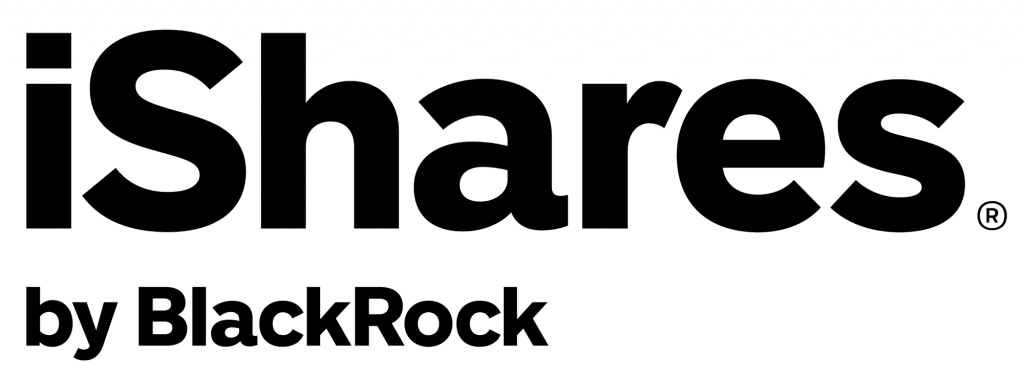
- Ticker: XSB.TO
- Currency: CAD
- Inception Date: November 20, 2000
- Assets under Management: $2.22 Billion
- Management Expense Ratio: 0.10%
- Listed on: Toronto Stock Exchange
- Distribution Yield: 2.66%
- Weighted Average Maturity: 2.99 Years
- Approximate Holdings: 530
- Management Style: Passive
- Risk Rating: Low
- Distribution Frequency: Monthly
- Stock Price: $25.88
- YTD Return: -0.21%
Next up behind BMO’s ZCS is XSB, offered through Blackrock’s iShares lineup. XSB has great features as well but lags behind ZCS across several metrics within the short-term bond ETF category.
While XSB is within the same short-term category as ZCS, it can be thought of as being lower risk because a significant portion of its portfolio is invested in short-term government bonds (which come with a lower risk than corporate bonds).
XSB invests entirely within Canada, across both government and corporate bonds. It is a passive strategy that tracks the FTSE Canada Short-Term Overall Bond Index.
XSB has over 500 holdings, making it even more diversified than ZCS. The ETF comes with another extremely low MER in the short-term bond space, beating out ZCS on price. In terms of assets, it is also much larger than ZCS.
The ETF pays out distributions monthly and keeps interest rate risk low, with an average bond maturity of just over 3 years. As a runner-up within the short-term bond category, XSB still has fantastic features but significantly lags behind ZCS in terms of its yield.
If you are looking to keep your fixed-income risk to a minimum, XSB may be a better choice than ZCS.
3. Vanguard Canadian Short-Term Bond Index ETF

- Ticker: VSB.TO
- Currency: CAD
- Inception Date: November 30, 2011
- Assets under Management: $1.03 Billion
- Management Expense Ratio: 0.11%
- Listed on: Toronto Stock Exchange
- Distribution Yield: 2.66%
- Weighted Average Maturity: 2.90 Years
- Approximate Holdings: 470
- Management Style: Passive
- Risk Rating: Low
- Distribution Frequency: Monthly
- Stock Price: $22.49
- YTD Return: -0.16%
In third place is VSB, offered by Vanguard Canada. Similar to ZCS and XSB, VSB has great features that make it an excellent candidate for inclusion within your short-term bond allocation.
Like XSB, VSB is lower risk than ZCS because a significant portion of its portfolio is invested in short-term government bonds.
VSB again invests entirely within Canada, across both government and corporate bonds. It is a passive strategy that tracks the Bloomberg Global Aggregate Canadian Gov/Credit 1-5 Year Float-Adjusted Bond Index.
With just under 500 holdings, VSB is well-diversified like the other ETFs in this category. VSB also comes with an extremely low MER in its space. In terms of assets under management, it is a very large ETF and roughly the same size as ZCS.
Like most fixed-income ETFs, VSB pays out distributions monthly. It keeps interest rate risk low with an average bond maturity of under 3 years, with the shortest weighted average maturity out of the three. With an equal distribution yield to XSB, it lags behind ZCS in terms of yield but comes with less risk.
VSB is an excellent option to consider within the Canadian short-term bond ETF universe.
Best Corporate Bond ETFs in Canada
The next category targets bond ETFs that invest in investment-grade corporate bonds. These bonds generally offer a good yield, much higher than short-term bonds. The main risk of corporate bonds is a decrease in the quality of the underlying company, leading to a downgrade of the bond.
4. BMO Mid Corporate Bond Index ETF
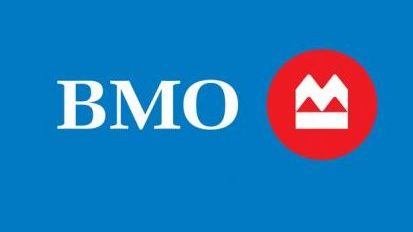
- Ticker: ZCM.TO
- Currency: CAD
- Inception Date: January 19, 2010
- Assets under Management: $479.45 Million
- Management Expense Ratio: 0.34%
- Listed on: Toronto Stock Exchange
- Distribution Yield: 3.94%
- Weighted Average Maturity: 6.82 Years
- Approximate Holdings: 200
- Management Style: Passive
- Risk Rating: Low
- Distribution Frequency: Monthly
- Stock Price: $14.68
- YTD Return: -0.58%
The top ETF choice in Canada for corporate bond exposure is BMO’s ZCM ETF. The ETF invests in Canadian corporate investment-grade bonds that have a maturity of between five and ten years.
ZCM passively tracks the FTSE Canada Mid-Term Corporate Bond Index.
With around 200 bond positions, the ETF is well diversified across Canadian corporate bonds. The ETF’s MER is average when compared to other fixed-income categories but well priced within the corporate bond ETF category. ZCM is a very large ETF in terms of assets.
ZCM pays distributions to investors monthly. While the ETF comes with a good annualized yield, it does take on considerable interest rate risk to do so.
ZCM’s excellent features make it our top choice in the corporate bond ETF category.
5. Horizons Active Corporate Bond ETF
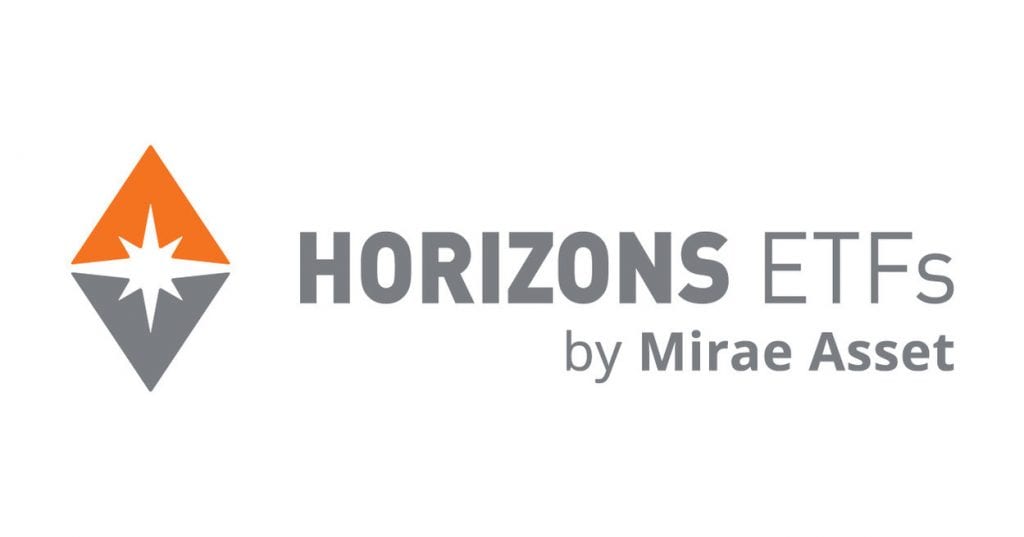
- Ticker: HAB.TO
- Currency: CAD
- Inception Date: July 14, 2010
- Assets under Management: $324.55 Million
- Management Expense Ratio: 0.60%
- Listed on: Toronto Stock Exchange
- Distribution Yield: 3.94%
- Weighted Average Duration: 5.84
- Approximate Holdings: 250
- Management Style: Active
- Risk Rating: Low
- Distribution Frequency: Monthly
- Stock Price: $9.75
- YTD Return: -0.59%
In second place is Horizon’s HAB ETF. Substantially different from ZCM, given its active management approach, HAB invests mainly in corporate bonds within Canada and the US.
With approximately 250 underlying bond holdings, the ETF is very well diversified. HAB comes with a substantially higher MER than ZCM, including the portfolio manager’s active involvement in the corporate bond strategy.
Like most fixed-income ETFs, distributions are paid to investors every month. HAB comes with a slightly lower yield than ZCM and lower interest rate sensitivity.
HAB is a great corporate bond ETF to consider in Canada, especially if you believe in the portfolio manager’s ability to add value relative to ZCM’s passive approach.

- Ticker: XCB.TO
- Currency: CAD
- Inception Date: November 6, 2006
- Assets under Management: $1.72 Billion
- Management Expense Ratio: 0.17%
- Listed on: Toronto Stock Exchange
- Distribution Yield: 3.70%
- Weighted Average Maturity: 9.06 Years
- Approximate Holdings: 950
- Management Style: Passive
- Risk Rating: Low
- Distribution Frequency: Monthly
- Stock Price: $19.25
- YTD Return: -0.72%
A third option in the Canadian corporate bond ETF category is Blackrock’s iShares Core Canadian Corporate Bond ETF. This passive ETF tracks the FTSE Canada All Corporate Bond Index.
XCB is the largest ETF out of the three, with many assets under management.
The ETF has just under 1,000 bond holdings, making it extremely well-diversified (potentially even over-diversified). XCB comes with the lowest MER out of the three ETFs in this category.
Despite its large size and low MER, there are several reasons why XCB is a third option. XCB’s annualized yield is the lowest out of the three ETFs and has the highest interest rate sensitivity.
While its great size and low cost are attractive features, the lower yield and higher interest sensitivity likely make it a poorer choice than ZCM and HAB.
Best High-Yield Bond ETFs in Canada
The high-yield category includes bond ETFs that focus on low-quality but high-yielding bonds. These bonds generally come with the highest possible yield and the highest risk of default. High-yield bonds are more similar to stocks than to investment-grade or government bonds.
There is a lot of value in selecting a high-yield ETF that is actively managed. Portfolio managers can implement their skill in picking high-yield bonds they believe will not default on their debt. Passive management in this space can lead to substantial losses if a passive ETF blindly tracks a high-yield index.
7. Horizons Active High-Yield Bond ETF

- Ticker: HYI.TO
- Currency: CAD
- Inception Date: February 14, 2012
- Assets under Management: $77.36 Million
- Management Expense Ratio: 0.71%
- Listed on: Toronto Stock Exchange
- Distribution Yield: 6.57%
- Weighted Average Duration: 3.53
- Approximate Holdings: 70
- Management Style: Active
- Risk Rating: Low to Medium
- Distribution Frequency: Monthly
- Stock Price: $7.43
- YTD Return: 0.29%
Within the high-yield space, Horizons’ HYI ETF is an excellent choice to consider adding to your portfolio. It is actively managed and pays an extremely high annualized yield to investors.
HYI invests in high-yield debt instruments of North American companies.
As mentioned before, high-yield bonds can sometimes be closer to stocks in terms of risk and volatility. This is indicated by Horizons’ low to medium risk rating.
With 70 holdings, HYI is decently diversified. It is best to allow portfolio managers in the high-yield space to run a slightly more concentrated mandate to try and avoid failing high-yield bonds. In terms of assets under management, HYI is a fairly small ETF, but not small enough to put it at risk of closing down due to size.
Relative to typical bond funds, HYI comes with a fairly high MER. The MER for high-yield ETFs can be expected to be higher than for traditional funds, especially if a mandate is actively managed (like HYI).
HYI pays distributions on a monthly basis and has a low duration, meaning that it keeps interest rate risk low. The bigger risk for high-yield bonds is the chance that the issuer will not be able to make the principal payment at maturity.
8. NBI High Yield Bond ETF

- Ticker: NHYB.TO
- Currency: CAD
- Inception Date: March 4, 2020
- Assets under Management: $1.03 Billion
- Management Expense Ratio: 0.69%
- Listed on: Toronto Stock Exchange
- Distribution Yield: 6.01%
- Modified Duration: 4.53
- Approximate Holdings: 600
- Management Style: Active
- Risk Rating: Not Rated
- Distribution Frequency: Monthly
- Stock Price: $21.05
- YTD Return: -0.53%
In second place within the high-yield bond ETF category is National Bank’s NHYB ETF. It is also actively managed and pays a high annualized yield (although it is lower than the yield of HYI).
NHYB invests almost entirely within the US high-yield market. The ETF is not rated by National Bank but would likely have a similar rating to HYI – low to medium.
With approximately 600 holdings, the ETF is very well diversified. This can create problems in the high-yield space if the portfolio manager does not closely monitor all positions to assess credit default risk. In terms of size, NHYB is a very large ETF and significantly larger than HYI.
A key point about NHYB is that it has a very short performance track record.
With regards to the ETF’s MER, it is marginally lower than HYI’s. Relative to passive bond funds, the MER is substantially higher, including covering the added value of the portfolio manager’s active management efforts.
NHYB pays distributions on a monthly basis and has slightly more interest rate risk than HYI. Given the lower yield, more interest rate risk, and higher risk of over-diversification, it lags behind HYI. This does not mean that it is not a great strategy to consider within the high-yield bond ETF category.

- Ticker: XHY.TO
- Currency: CAD
- Inception Date: January 21, 2010
- Assets under Management: $445.76 Million
- Management Expense Ratio: 0.66%
- Listed on: Toronto Stock Exchange
- Distribution Yield: 5.55%
- Effective Duration: 4.33
- Approximate Holdings: 1200
- Management Style: Passive
- Risk Rating: Low to Medium
- Distribution Frequency: Monthly
- Stock Price: $16.27
- YTD Return: -0.3%
The third option for a high-yield bond ETF in Canada is XHY, offered by Blackrock’s iShares. It is passively managed and pays the lowest annualized yield out of the three ETFs in our high-yield category. The ETF passively tracks the Markit iBoxx USD Liquid High-Yield Total Return Index Hedged in CAD.
XHY invests exclusively in high-yield debt instruments of US companies. Blackrock labels the ETF as carrying a low to medium risk.
With 1,200 holdings, XHY is likely over-diversified. Since the ETF is passively managed, it could include undesirable high-yield positions included in its index. In terms of assets under management, it is a fairly large ETF.
While XHY’s MER is in line with the other two ETFs in the high-yield bond ETF category, it is relatively over-priced. This is because XHY is passively managed against an index, while both HYI and NHYB leverage a portfolio manager’s expertise to select holdings.
XHY pays distributions monthly and comes with the lowest annualized yield out of the three.
While XHY is not as strong a choice as HYI or NHYB, it remains a good Canadian high-yield bond ETF to consider if you are looking to diversify across several funds.
Best Floating-Rate Bond ETFs in Canada
The floating-rate bond category is fairly unique in terms of its features. ETFs in this category invest in bonds that adjust their coupon payments based on current interest rates. If interest rates rise, these bonds will pay out more, and vice versa. While this is an attractive feature, these bonds tend to have a lower yield.
10. Mackenzie Floating-Rate Income ETF

- Ticker: MFT.TO
- Currency: CAD
- Inception Date: April 19, 2016
- Assets under Management: $561.91 Million
- Management Expense Ratio: 0.68%
- Listed on: Toronto Stock Exchange
- Distribution Yield: 10.36%
- Weighted Average Maturity: 5.68 Years
- Approximate Holdings: 450
- Management Style: Active
- Risk Rating: Low to Medium
- Distribution Frequency: Monthly
- Stock Price: $17.3
- YTD Return: 1.04%
Mackenzie’s Floating-Rate Income ETF, MFT, is the top ETF to consider within the floating-rate bond ETF category. The ETF is actively managed and invests in floating-rate bonds, mainly in the US. The bonds contained within MFT’s portfolio are mostly rated below investment grade.
MFT is a very large ETF, just below one billion dollars in assets. It is offered at an average MER for an active floating-rate ETF, but its fees are fairly high relative to other fixed-income categories.
MFT has approximately 450 holdings, making it extremely well-diversified. It has a relatively short performance track record when compared to most other bond ETFs on our list.
Similar to most bond funds, MFT pays monthly distributions to investors. It comes with a good annualized yield, but be mindful that the ETF is labelled low to medium risk.

- Ticker: XFR.TO
- Currency: CAD
- Inception Date: December 6, 2011
- Assets under Management: $808.07 Million
- Management Expense Ratio: 0.22%
- Listed on: Toronto Stock Exchange
- Distribution Yield: 4.91%
- Weighted Average Maturity: 2.12 Years
- Approximate Holdings: 20
- Management Style: Passive
- Risk Rating: Low
- Distribution Frequency: Monthly
- Stock Price: $20.16
- YTD Return: 0.41%
In second place is the XFR ETF offered through Blackrock’s iShares lineup. It passively tracks the FTSE Canada Floating Rate Note Index.
As an ETF, XFR is radically different from MFT. XFR only invests in floating-rate bonds within Canada, most of which are government-issued bonds. Since the quality of the government bonds is much higher than MFT’s sub-investment-grade holdings, the portfolio’s risk characteristic differs.
XFR’s differing approach is reflected in its statistics. It has a much lower annualized yield than MFT and is rated low-risk by Blackrock.
Similar to most bond funds, XFR pays out a monthly distribution.
XFR is a very large ETF in terms of assets. When considering its MER, it is substantially lower than MFT’s. This is mainly because XFR is passively-managed and has an extremely concentrated mandate (with roughly only 20 holdings).
Given XFR’s lower yield and higher concentration, we rank it a close second to MFT. It remains an excellent choice as a Canadian floating-rate bond ETF.
12. BMO Floating-Rate High Yield ETF

- Ticker: ZFH.TO
- Currency: CAD
- Inception Date: February 10, 2014
- Assets under Management: $81.96 Million
- Management Expense Ratio: 0.45%
- Listed on: Toronto Stock Exchange
- Distribution Yield: 7.06%
- Weighted Average Maturity: 4.72 Years
- Approximate Holdings: 8
- Management Style: Active
- Risk Rating: Low to Medium
- Distribution Frequency: Monthly
- Stock Price: $14.61
- YTD Return: 0.56%
The third option for floating-rate bond exposure in Canada is offered through BMO’s ZFH ETF. ZFH is slightly different because it enhances yield by using credit default swaps (CDS) on US high-yield issuers.
ZFH is much smaller than both XFR and MFT in terms of assets. It comes with a reasonable MER for an actively-managed floating rate ETF in Canada.
Similar to MFT, ZFH targets non-investment-grade bonds for floating rate exposure. This puts it at a relatively higher risk rating than most bond ETFs.
ZFH pays investors a monthly distribution and has a great annualized yield. While it may seem extremely concentrated, ZFH’s holdings understate its diversification due to the usage of CDS.
Given XFR’s lower yield and higher concentration, we rank it a close second to MFT. It remains an excellent choice as a Canadian floating-rate bond ETF.
Best Government Bond ETFs in Canada
The last bond ETF category includes government bonds. For developed countries, bonds issued by the government are generally of the highest quality relative to companies operating within the country. Since these government bonds have a much lower chance of default, they tend to pay a much lower yield than corporate bonds.
13. BMO Government Bond ETF

- Ticker: ZGB.TO
- Currency: CAD
- Inception Date: March 2, 2018
- Assets under Management: $1.09 Billion
- Management Expense Ratio: 0.17%
- Listed on: Toronto Stock Exchange
- Distribution Yield: 2.71%
- Weighted Average Maturity: 10.67 Years
- Approximate Holdings: 300
- Management Style: Passive
- Risk Rating: Low
- Distribution Frequency: Monthly
- Stock Price: $44.15
- YTD Return: -1.63%
Our first choice within the government bond ETF category in Canada is BMO’s ZGB ETF. ZGB invests in Canadian government bonds with a maturity of more than one year. It passively tracks the FTSE Canada All Government Bond Index.
ZGB is a large ETF in terms of assets. It comes with a low MER relative to most other bond ETFs in Canada. ZGB has a short performance track record.
ZGB pays a relatively low yield and comes with high-interest rate sensitivity. As a government bond ETF, it does come with very little credit default risk. It is very well diversified, with around 300 underlying bond holdings and pays monthly distributions to investors.
Given its excellent features, ZGB is our top choice in this category.

- Ticker: XGB.TO
- Currency: CAD
- Inception Date: November 6, 2006
- Assets under Management: $1.05 Billion
- Management Expense Ratio: 0.13%
- Listed on: Toronto Stock Exchange
- Distribution Yield: 2.73%
- Weighted Average Maturity: 10.79 Years
- Approximate Holdings: 425
- Management Style: Passive
- Risk Rating: Low
- Distribution Frequency: Monthly
- Stock Price: $18.73
- YTD Return: -1.63%
Our second choice in this category is XGB from iShares, which is almost identical to ZGB. XGB also invests in Canadian government bonds with a maturity of more than one year and passively tracks the FTSE Canada All Government Bond Index.
XGB is a large ETF in terms of assets, with a similar level of AUM to ZGB. Although it has a longer track record than ZGB, it comes at a much higher MER for the same strategy.
Relative to ZGB, XGB pays a lower yield and has a higher weighted average maturity. XGB is better diversified, with over 400 underlying bond holdings.
Since XGB and ZGB are virtually aiming to replicate the same index, they should be compared based on their features. XGB’s lower yield and substantially higher MER puts it in second place to ZGB.
15. Vanguard Canadian Government Bond ETF

- Ticker: VGV.TO
- Currency: CAD
- Inception Date: January 31, 2017
- Assets under Management: $68.64 Million
- Management Expense Ratio: 0.17%
- Listed on: Toronto Stock Exchange
- Distribution Yield: 2.77%
- Weighted Average Maturity: 11.3 Years
- Approximate Holdings: 400
- Management Style: Passive
- Risk Rating: Low
- Distribution Frequency: Monthly
- Stock Price: $21.72
- YTD Return: -1.71%
The third option for a government bond ETF in Canada is VGV from Vanguard. It is a passive ETF that tracks the Bloomberg Barclays Global Aggregate Canadian Government Float Adjusted Bond Index.
VGV comes with the lowest distribution yield out of the three, as well as the highest weighted average maturity. In terms of its MER, VGV is very inexpensive and comes at an identical fee to ZGB.
VGV has a short performance track record and is also a fairly small ETF. It is well diversified across roughly 400 positions and pays distributions to investors on a monthly basis.
Due to weaker overall features when compared to ZGB and XGB, VGV takes the third spot in this category.
What are the downsides of bond ETFs?
First, despite their reputation as a safe investment, the value of bond ETFs can fluctuate due to the secondary bond market. This means that your capital may not be as secure as it would be if you were directly investing in the actual bonds themselves.
Second, as interest rates change, the yield of your bond ETF may change too. If interest rates rise, your bond ETF’s yield could decrease, and vice versa. This can make it more difficult to predict its performance over time, especially in a volatile interest rate environment.
Third, the management fees and trading costs associated with bond ETFs can add up over time. Although many bond ETFs boast low expense ratios, these fees can still eat into your overall returns. Also, some bond ETFs may have higher trading costs and wider bid-ask spreads, increasing the cost of buying and selling shares.
Lastly, for taxable accounts, bond ETFs may have less favourable tax treatment compared to individual bonds. The interest income generated by bond ETFs is subject to taxes, whereas the capital gains on individual bonds are only taxed when they are sold or redeemed.
Combining Bond ETFs with Equity ETFs to Build a Portfolio
Bond ETFs usually play a critical role in the asset allocation of a well-built portfolio. Your allocation between stocks and bonds mainly depends on your goals and risk tolerance.
When looking to add bond ETFs to a portfolio, we recommend implementing more “vanilla” bond categories first. These are typically government bonds and corporate bonds.
Bonds in high-yield, floating-rate, and short-term categories are used only for a small portion of the overall portfolio. Their usage depends greatly on your investment circumstances and broader market conditions.
Best Bonds ETFs to combine with All-In-One Equity Portfolios
If you are looking to achieve a specific asset allocation through bond ETFs and an all-in-one equity portfolio, we recommend starting off with our best picks from the more core fixed-income categories.
If you are a more aggressive investor, consider using corporate bonds instead of government bonds. If you are a more conservative investor, government bonds may be a safer pick.
For corporate bonds, we recommend the following:
- BMO Mid Corporate Bond Index ETF
- Horizons Active Corporate Bond ETF
- iShares Core Canadian Corporate Bond ETF
For government bonds, we recommend the following:
- BMO Government Bond ETF
- iShares Core Canadian Government Bond ETF
- Vanguard Canadian Government Bond ETF
Bond ETFs and Taxes in Canada
If you’re considering bond ETFs in Canada, understanding the tax nuances associated with these investments is important. Here are some points to keep in mind:
- Interest income from bond ETFs is taxed as regular income at your marginal tax rate.
- This treatment differs from dividends, which may have preferential tax treatment through the dividend tax credit.
- To mitigate tax on interest income:
- Use tax-sheltered accounts like RRSPs or TFSAs.
- Within these accounts, interest can be deferred or tax-eliminated.
- In non-registered accounts:
- Report interest income on tax returns.
- Monitor your adjusted cost base (ACB) for each ETF.
- Capital gains or losses arise from differences between ACB and selling price.
- Foreign bond ETFs:
- May be subject to withholding taxes.
- In non-registered accounts, taxes apply to both interest income and foreign taxes withheld.
- Financial institutions usually withhold required taxes before distribution.
- A foreign tax credit might be claimable on Canadian tax returns in some situations.
How to Buy the Best Bond ETFs in Canada
The cheapest way to buy ETFs is from discount brokers. My top choices in Canada are:
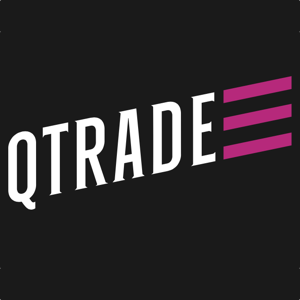
- 105 commission-free ETFs to buy and sell
- Excellent customer service
- Top-notch market research tools
- Easy-to-use and stable platform

- Stock and ETF buys and sells have $0 trading fees
- Desktop and mobile trading
- Reputable fintech company
- Fractional shares available
To learn more, check out my full breakdown of the best trading platforms in Canada.
Conclusion
The world of fixed-income investing is complex and comes with many different categories of bonds to consider for your portfolio.
We have covered some of the best ETFs in Canada across five major bond categories. How valuable each type of bond ETF is to your portfolio will depend on your personal circumstances and broader market conditions.
Be mindful that different types of bonds perform better as market conditions fluctuate over a business cycle. Here’s a complete list of the best ETFs in Canada.
Make sure to assess your current situation and future goals to develop an appropriate portfolio structure.






Hi Chris, Just a request that could you please make video for the beginners explaining the how much fees or interest we have to pay for stocks and etfs and when? If we file tax, what we have to do, do we have to tell the government regarding our investment? If we invest short term, how much the interest will be? If we invest long term, What we have to pay in the end?
Regarding bond etfs, what does average duration means?
If you don’t wanna make a video , please reply with the answers. These answers are very hard to find for new investors.
Thanks in advance:)
Hey Harneet, I’ll try to adjust your questions: 1) Fees depends on how you purchase the stocks and etf, check out this for more guidance: https://wealthawesome.com/how-to-start-investing-canada/ 2) If you file tax, you will have to pay taxes on any gains in non-registered accounts. If you have your investments in your TFSA or RRSP, you don’t have to pay anything. 3) If you invest short-term, at EQ Bank it will be 1.25% currently see here for more details: https://wealthawesome.com/recommends/eq-bank 4) If you invest long-term, if it’s in your TFSA you won’t have to pay anything, if it’s in RRSP you’ll have to pay taxes as you withdraw it, I’m not really sure what you mean by this 5) average duration I wouldn’t worry about too much, it’s a more advanced term. Just know what your correct fixed income to equity split will be. Hope this helps!